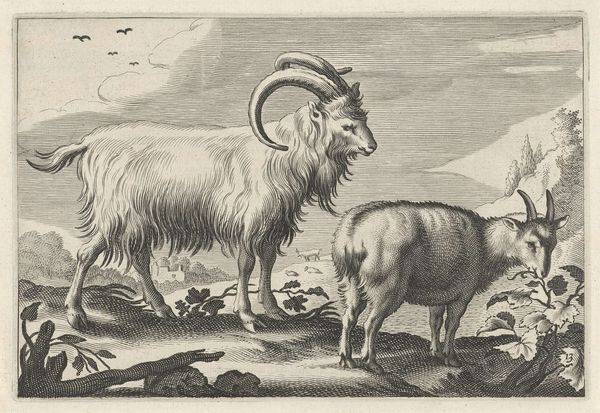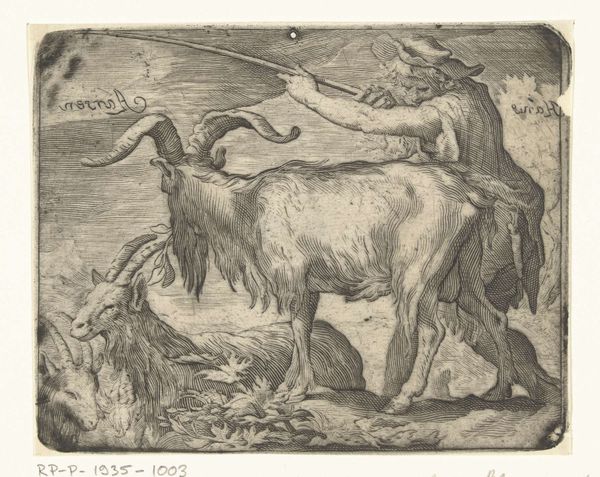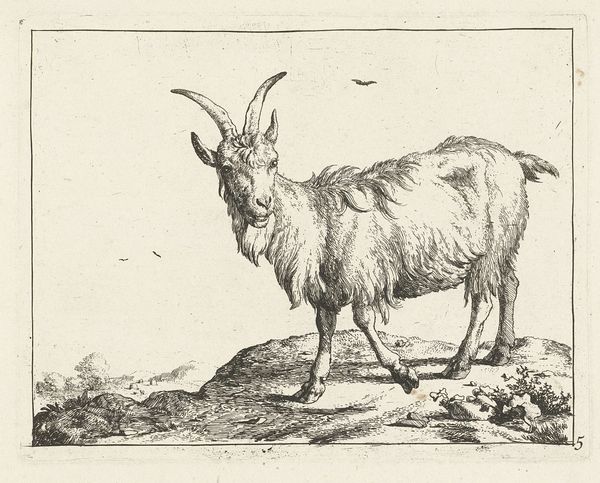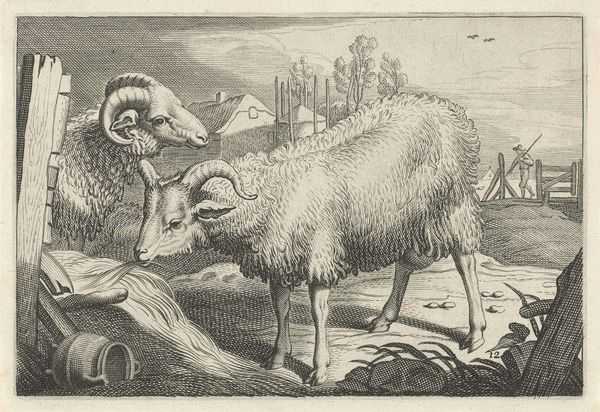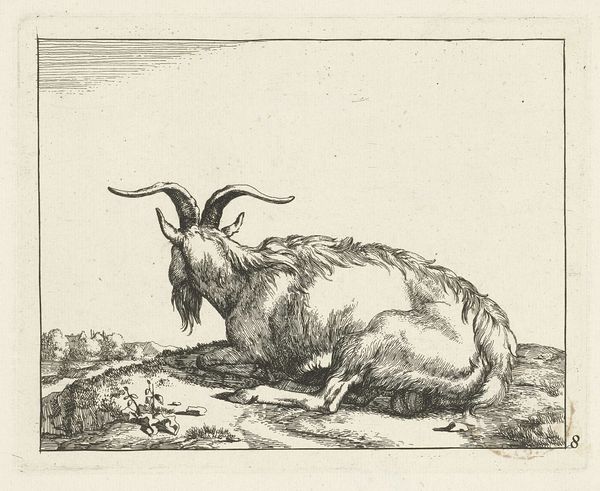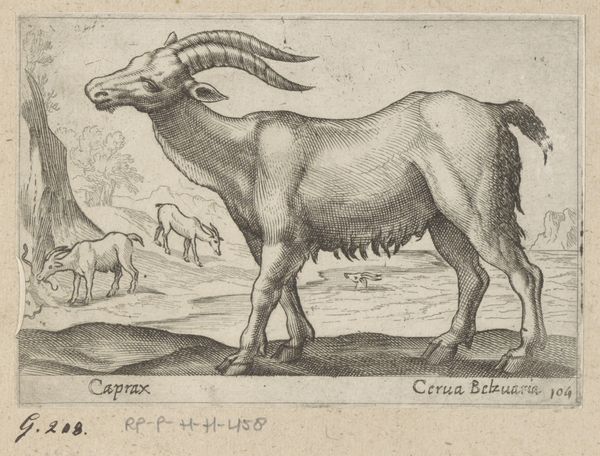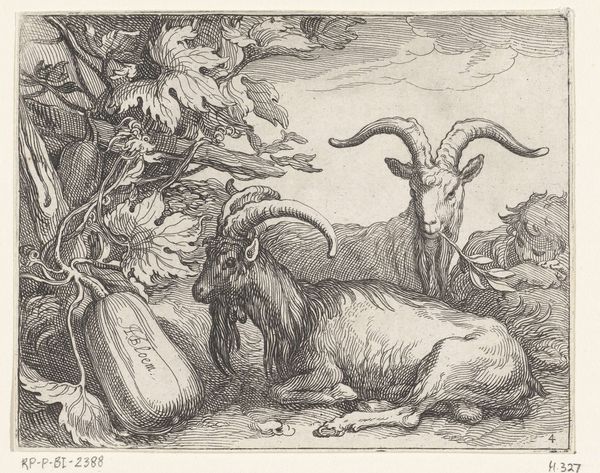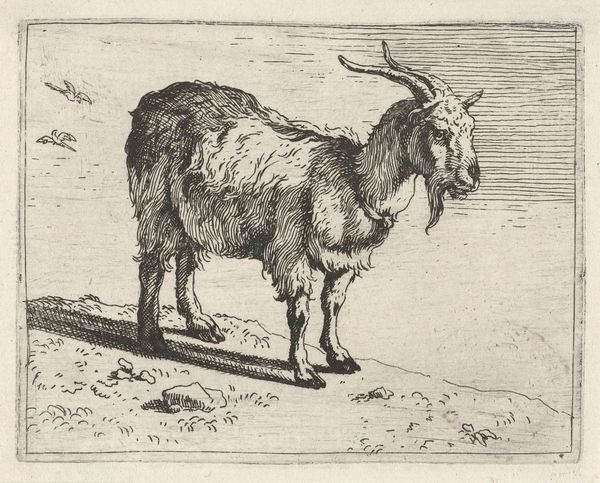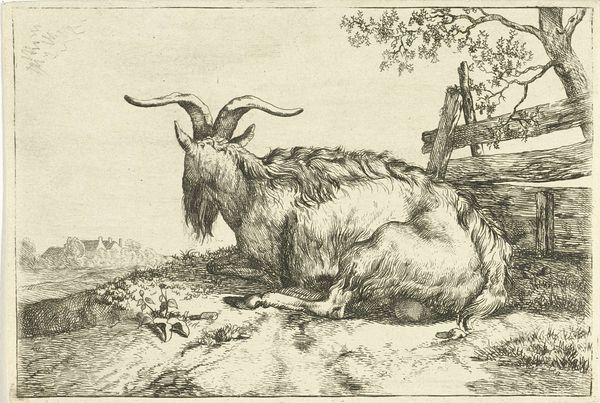
print, engraving
#
baroque
#
animal
#
dutch-golden-age
# print
#
pen illustration
#
pen sketch
#
landscape
#
figuration
#
engraving
Dimensions: height 131 mm, width 195 mm
Copyright: Rijks Museum: Open Domain
Reinier van Persijn created this etching, "Two Goats in a Vineyard," in the mid-17th century using the subtractive process of engraving into a metal plate. Notice how the texture of the goats’ fur and the leaves of the vineyard is achieved through varied densities of fine lines. The choice of etching is significant. Unlike painting, which was often commissioned by the wealthy, printmaking allowed for wider distribution of images. Etchings like this could be reproduced multiple times, making art more accessible, reflecting a shift in the social landscape of art consumption. Consider the labor involved: the careful, precise work of the engraver. The production of prints allowed artists to generate income by selling these multiples in the open market. In a time of increasing urbanization and a developing market economy, this work speaks to emerging systems of production and consumption. Looking at the work this way encourages us to think beyond aesthetic appreciation, and consider the economic and social forces at play in its making.
Comments
No comments
Be the first to comment and join the conversation on the ultimate creative platform.
